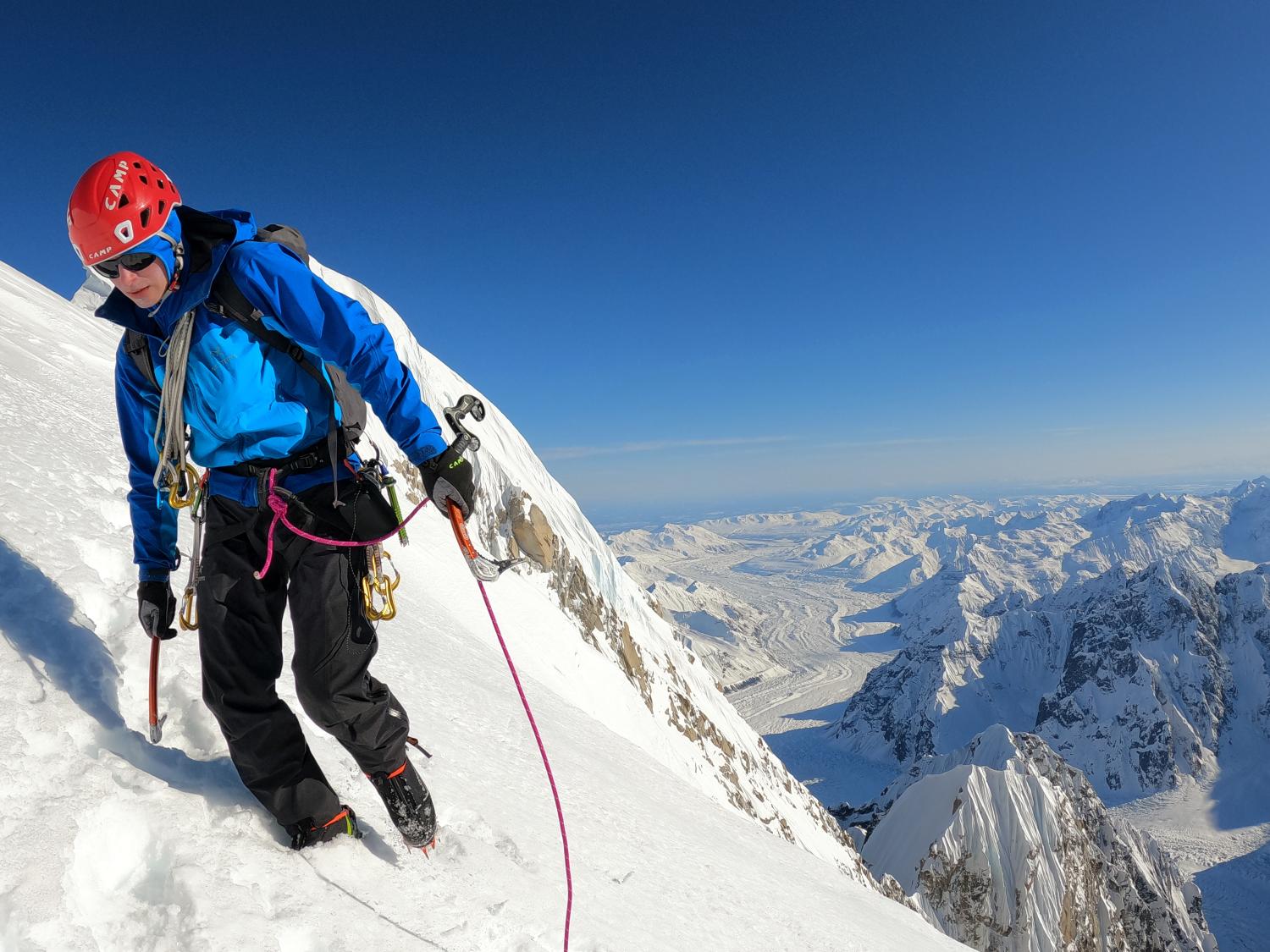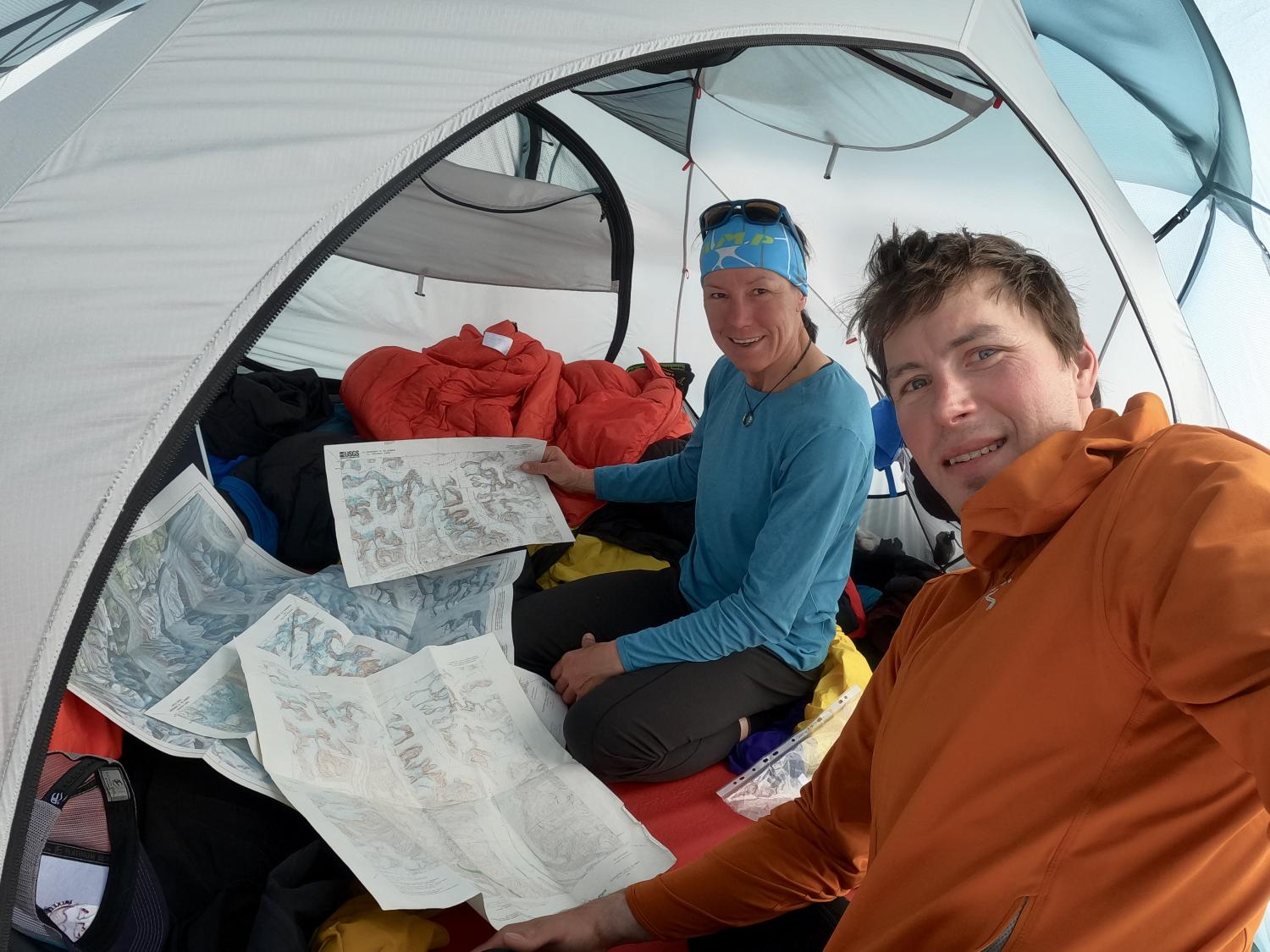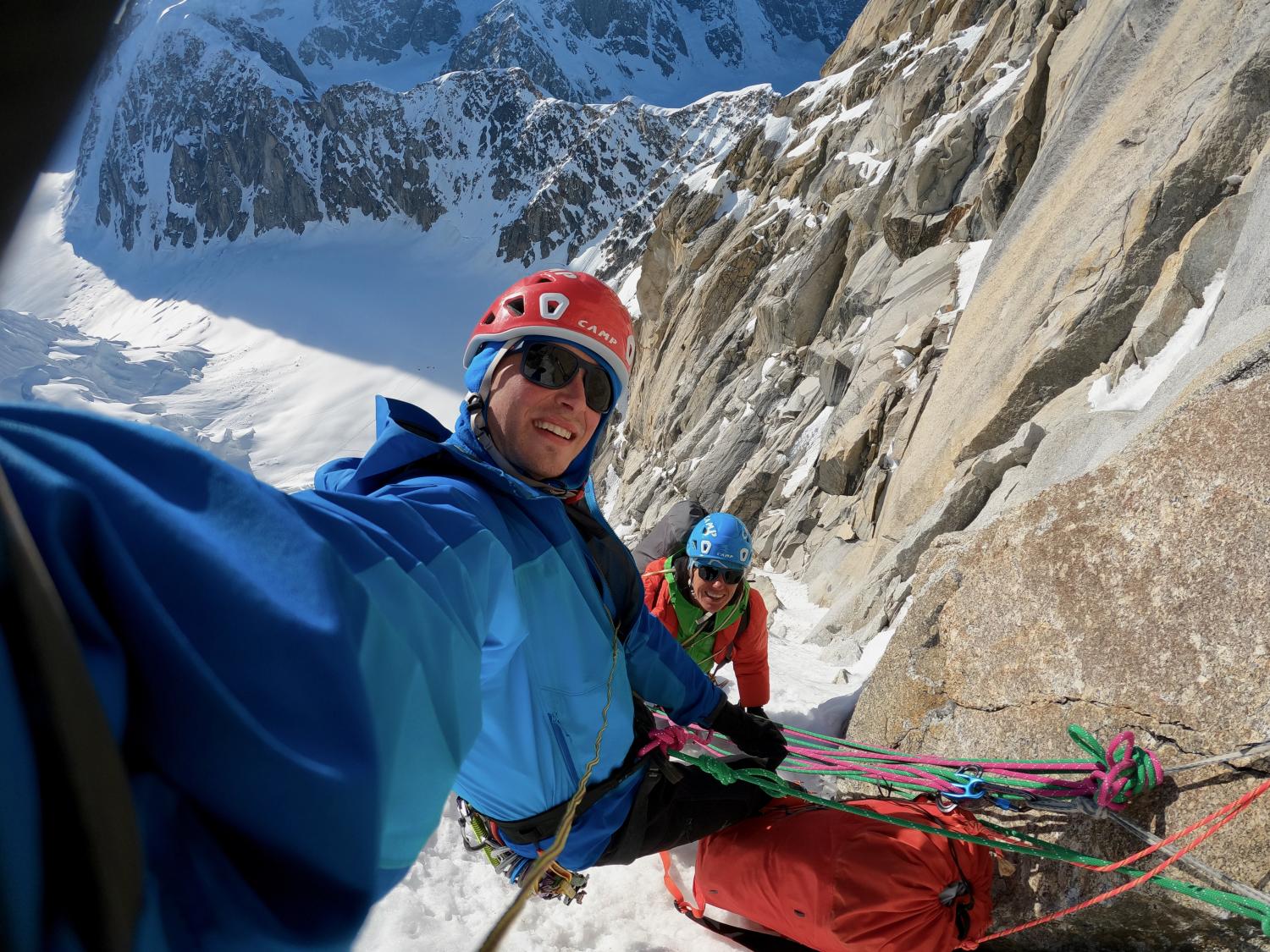Heart of Stone: Denali's Mt. Huntington Just Got A New Summit Route | by Luka Lindič

Catch Ines on an episode of "In Her Own Voice," a series by the Cutting Edge Podcast, where she talks all about being a trailblazing female climber, a mother, and more.
We are a month into what might be a journey of our life. Traveling and climbing along the whole “Panamericana” has finally begun and, considering the situation the world is in today, we definitely feel privileged to be able to do it. This year, we are staying in Alaska for three months and this first month has already offered us plenty of alpine climbing. In Revelations, we got totally shut down because of weather conditions in the beginning of April. After a short break in Seward, luck was on our side in Denali National Park.
After checking the walls along Ruth glacier, Paul Roderick dropped us below Huntington’s west face, as it seemed in most promising conditions from what we were able to see from the small airplane. After setting a base camp, we quickly went to work in the wall on the route Colton Leach early the following morning. We were relieved to find good conditions and quickly progressed on moderate ice, many times stretching the pitches up to 150m. Being quick paid off as the snow on the ramps in the middle part was still frozen when we reached it and enabled us to continue at a good pace.
At the end of the ramps, we zigzagged through the rocky section and climbed a short section or really cool step cracks in perfect granite to the snow flank above. On this route, we found a trail from the party that had climbed the Harward route a couple of days prior. We followed it smoothly to the summit ridge to the top of Mt. Huntington.
It was really calm and warm at the summit but we quickly started with descent as we didn't bring any bivy gear. We downclimbed the ridge and one more rope length from the ridge and then rappelled making V-threads except for a few points for rock belays that we found. It was a rather straightforward rappelling.
And once we made it to the west face couloir, I kept looking in the steep wall to the climbers left of us. The rock looked very solid but full of good looking cracks. The idea of climbing this part of the wall seemed safe enough to do, but at that moment, we didn't seriously think of doing it as we were still busy with coming back to our tent in the last light of the day.
The day after, we were relaxing in the warm sun and started thinking of what to try next after we got a very promising weather forecast for three more days from Jack Tackle, who was kind enough to share his knowledge with us while we were in Alaska. Warm temperatures seemed perfect for that steep rock wall, we saw on the descent. We even had climbing shoes with us in base camp because we didn't know where we would end on this trip. We relatively quickly decided to try it after one more rest day.

This time, we packed bivy gear, more friends, and also rock shoes. From what we saw, we thought we would be rock climbing for few pitches to reach an obvious mixed ramp system. For that same reason, we decided to start late from our base camp to use the warmth of afternoon sun for rock climbing.
Cloudless blue skies accompanied us when we left our camp for the second time at 11 a.m. on April 26. We found perfect conditions on the initial snow slope that we shared with the west face couloir route and arrived smoothly to the steep wall, just when the sun hit it. At the place where we started climbing new terrain, we spotted a big heart feature on a blank granite face. It felt almost too sweet for us as a climbing couple, so we both laughed at the belay.
To our surprise, the crack system that seemed the most logical was filled with ice. It was some weird ice. It was the same colour as the rock because of all the dirt in it. This is why we couldn't see it from a distance. Rock shoes stayed in the backpack and we continued in full on mixed climbing mode.
The climbing was steep and almost every pitch had a kind of a boulder problem crux. Some of them were quite powerful but luckily had decent protection. At that point, there was already water running down the face and the ice became really rotten and slushy. It seemed we got the last day in that window before the ice would disappear.

In the last pitch before reaching a right trending ramp system we had a first little shock when Ines pulled off a loose hold and just barely managed to catch herself. The ramp itself went very quick for a half rope length and then I got stuck for quite some time on one of those boulder cruxes. I underestimated it and started climbing up it with a backpack.
Move for move, cleaning lots of useless snow and trying to find safe placements in thin ice, I found myself in a really awkward position where I couldn’t take off my pack anymore and hang it onto a piece. I started reaching as far as I could towards the first good looking patch of ice, but I couldn’t reach it. I hammered the lower tool as deep as I could into the ice and grabbed it at the head of the tool. With this extra reach, I just barely reached the next ice patch. I still don't know how I managed to catch the lower tool in the fall and actually catch myself. After some heavy breathing, I tried again and finally reached it.
The rest of the ramp went really well with some great ice and good hooking in the cracks until the very last pitch before the snow flank. This pitch took almost two hours of digging on the side of a huge mushroom and with quite bad and run out protection. It was definitely the most serious pitch in the route, especially since it was dark when we climbed it.
In two more rope stretches, we reached a perfect bivy spot below a big block. It was already 3 in the morning and we felt tired, but a full moon came out and we couldn’t go to sleep for almost two more hours because it was too nice.